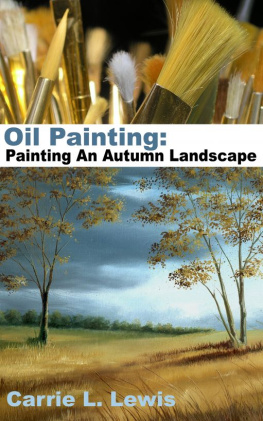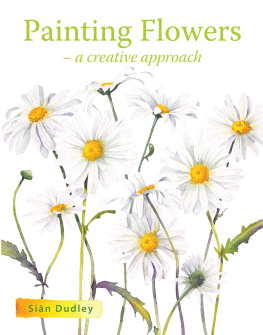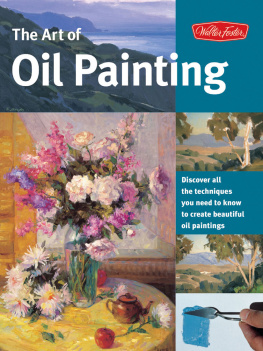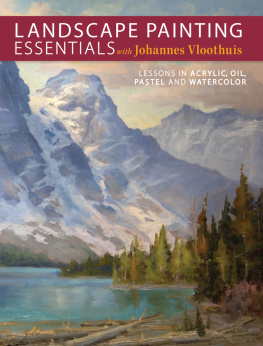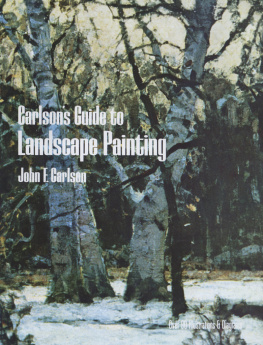ONE
PAINTING
A DAY
A 6-WEEK COURSE IN OBSERVATIONAL PAINTINGCREATING EXTRAORDINARY PAINTINGS FROM EVERYDAY EXPERIENCES
TIMOTHY CALLAGHAN

2013 by Quarry Books
First published in the United States of America in 2013 by
Quarry Books, a member of
Quayside Publishing Group
100 Cummings Center
Suite 406-L
Beverly, Massachusetts 01915-6101
Telephone: (978) 282-9590
Fax: (978) 283-2742
www.quarrybooks.com
Visit www.Craftside.Typepad.com for a behind-the-scenes peek at
our crafty world!
All rights reserved. No part of this book may be reproduced in any form without written permission of the copyright owners. All images in this book have been reproduced with the knowledge and prior consent of the artists concerned, and no responsibility is accepted by the producer, publisher, or printer for any infringement of copyright or otherwise, arising from the contents of this publication. Every effort has been made to ensure that credits accurately comply with information supplied. We apologize for any inaccuracies that may have occurred and will resolve inaccurate or missing information in a subsequent reprinting of the book.
10 9 8 7 6 5 4 3 2 1
Digital Edition: 978-1-61058-771-6
Softcover Edition: 978-1-59253-830-0
Digital edition published in 2013
Library of Congress Cataloging-in-Publication Data
Callaghan, Timothy (Timothy H.)
One painting a day : a 6-week course in observational painting--creating extraordinary paintings from every day experience / Timothy Callaghan.
pages cm -- (One a day)
Summary: One Painting A Day offers you an inspiring six-week course exploring the timeless traditions of observational painting through daily experience and routine. This motivational guide is broken up into three parts to focus on the three major traditions of observational painting: still life, landscape, and portraiture. Each of the 42 daily exercises launches a small, immediate, and responsive painting based on a theme drawn from your daily experience.
--Provided by publisher
ISBN 978-1-59253-830-0 (pbk.)
1. Painting--Technique. I. Title.
ND1473.C35 2013
751.4--dc23
2013008887
Cover and book design: Dominick Santise
Front cover images (clockwise, from top left): Timothy Callaghan (see page );
Amy Kligman (page );
Libby Black (page )
Spine: Timothy Callaghan (page )

Old Maker

North Shore Carpet Beaters Union
CONTENTS
INTRODUCTION

Necking, gouache
The secret to success in any creative field is a dedicated work ethic. Commitment to your practice is more important than any natural ability or God-given talent. The craft of painting is no different; it requires the practitioners love of the process and willingness to do it every day, even if its only for a few hours.
No single book or particular instructor can teach you to paint. As artists, we teach ourselves through trial and error and repetition. While teachers and books are excellent resources, they are simply tour guides for the journey.
This book is such a guide, intended to inspire you to look around your local environment and respond to your daily experiences through the craft of painting.
Paintings describe the sensation of looking at something. They also describe how long it takes to look at something before you can actually see it. They are a visual conversation between you, the artist, and your viewer, describing your experiences and the things you look at on a daily basis. Painting is a poetic and ethereal language that allows for a nonlinear type of storytelling.
In representational painting, an artwork can fall into three major genres or categories: still life, landscape, and portraiture. Objects, space, and the figure (like nouns; things, place, and person) are the cornerstones of good storytelling. In this book we look at these three major formats, both independently and how they overlap to create paintings that tell our stories.
One Painting a Day is a commitment to a philosophy with rewards that can be seen every day. Each painting is a response to the last painting the artist made, an effort to make it better.
By taking this challenge of creating one painting a day, you have already succeeded. By the time you finish the forty-two paintings, your progress will be overwhelmingly gratifying.
The process of painting is typically thought of as lengthy, built up in successive layers. In many cases this is true, but there is an approach that is more immediate and akin to the spontaneity of a medium like drawing. This book is in part inspired by that approach: By working on a smaller scale and with quick-drying paints like acrylic and gouache, you can make one painting a day.
This book is also inspired by the first book in this series, Veronica Lawlors One Drawing a Day. Within a six-week structure, Lawlor encourages her readers to build good studio habits and make a work every day without judging the results.
Working in the studio making paintings can be a very solitary practice, which is why having a community element to your studio habits can be very beneficial. Community has always been an integral part of my studio practice; I continue to include friends whose work I respond to into that process. Weve exhibited together, share our progress, and talk about painting. Communication and collaboration becomes increasingly challenging once we leave the formal environment of school and our lives get busier, but technology and the Internet still make it possible.
For this book Ive invited six painterspeople whose work Ive loved and known for a long timeto join me on this one painting a day journey. Even though we are spread all over the country, we still talk about painting and continue to share our progress with one another. This is something you can do too. As you embark on this journey, invite fellow artists to take the challenge and share your progress.
The six-week course of forty-two exercises focuses on the major formats of representational painting, using both pure observation and photography as a reference.
Using the first weeks worth of exercises as a springboard or course primer, we will look at all of the seven elements of art in relation to painting. Then, in Week 2, we begin to introduce narrative as a way to generate content and look for objects that inspire invention.
Weeks 3 and 4 are devoted to investigating space in our local landscape and discovering how the places we see every day can encourage inspired paintings.
The final two weeks of exercises are about the human element. We introduce portraiture and the figure to interact with the objects and space we have created.
This may seem overwhelming at first. Admittedly, when I began my own one-painting-a-day journey, at times it seemed impossible. Getting into the studio was the last thing I wanted to do.
Dont get discouraged if you have a bad day in the studio; its part of the process. If you miss a day or dont finish a painting in the time allotted, simply double your efforts the next day. Most importantly, remember that by simply trying to make one thing a day, you have already succeeded.



